Ribeye steak: If you want the best ribeye, there’s no need to eat out when you can prepare it at home. Tossed with the finest herb and garlic butter and grilled to perfection!
The Best Ribeye Steak
This is the most stunning ribeye I have ever seen! A delicious crust of garlicky, herbaceous butter.
It’s so gorgeous that words can’t describe it.
Don’t waste your money on a fancy restaurant for Valentine’s Day. Ignore the wait time and the cramped seating. This ribeye recipe is all you will ever need!
A high-quality ribeye steak, a few simple ingredients, and a cast-iron pan are all you need to make this dish.
What you need:
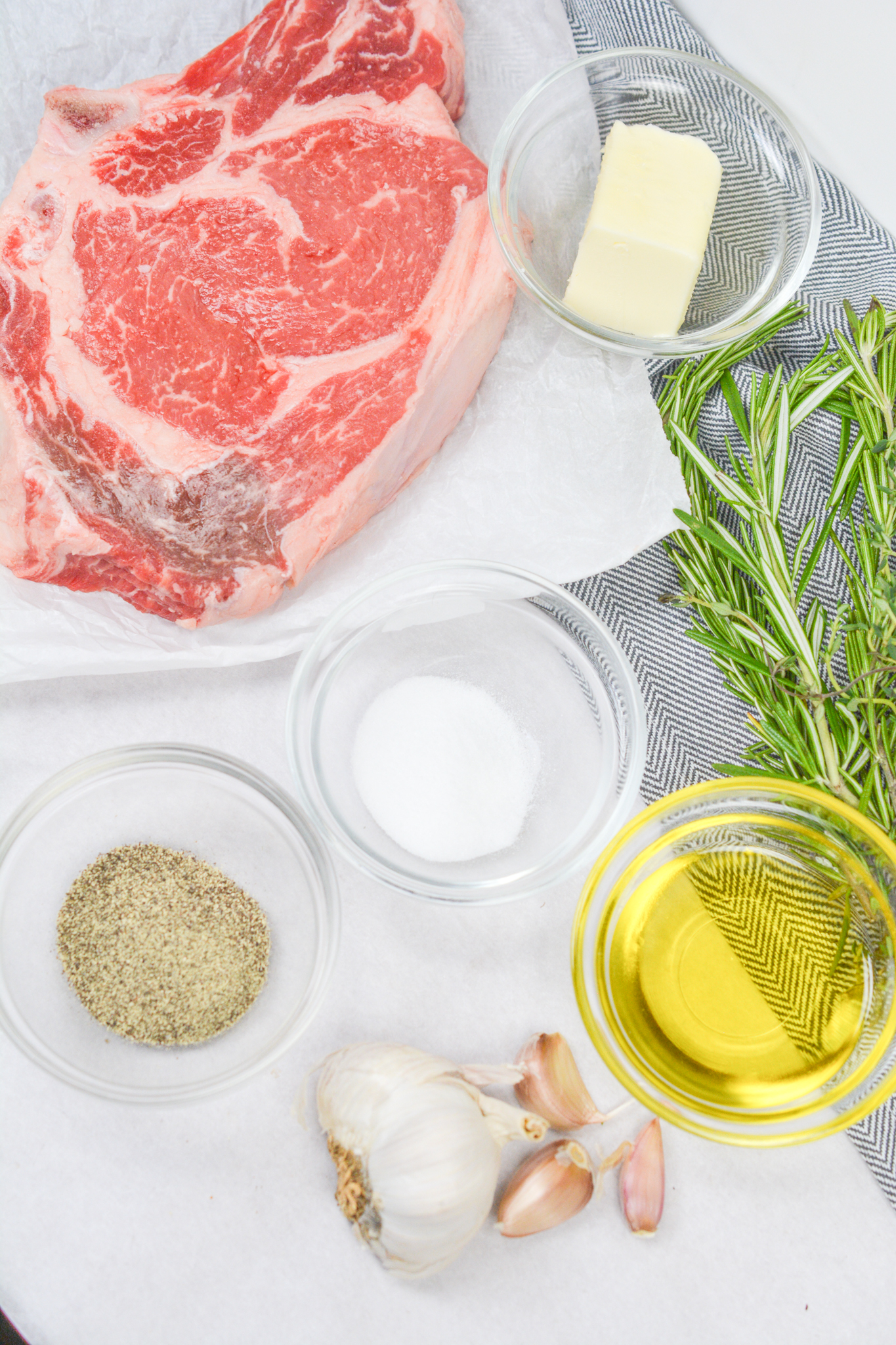
- 1 tbsp canola oil
- 2 sprigs of fresh rosemary
- 1 24-oz. bone-in ribeye steak, 2-inch-thick, at room temperature
- 3 tbsp unsalted butter
- 3 cloves garlic, smashed
- 3 sprigs of fresh thyme
- Kosher salt and freshly ground black pepper, to taste
Quickly outdo the restaurant down the street with the help of a few easy tricks, such as flipping the steak frequently to produce a lovely crust without overcooking it too well done.
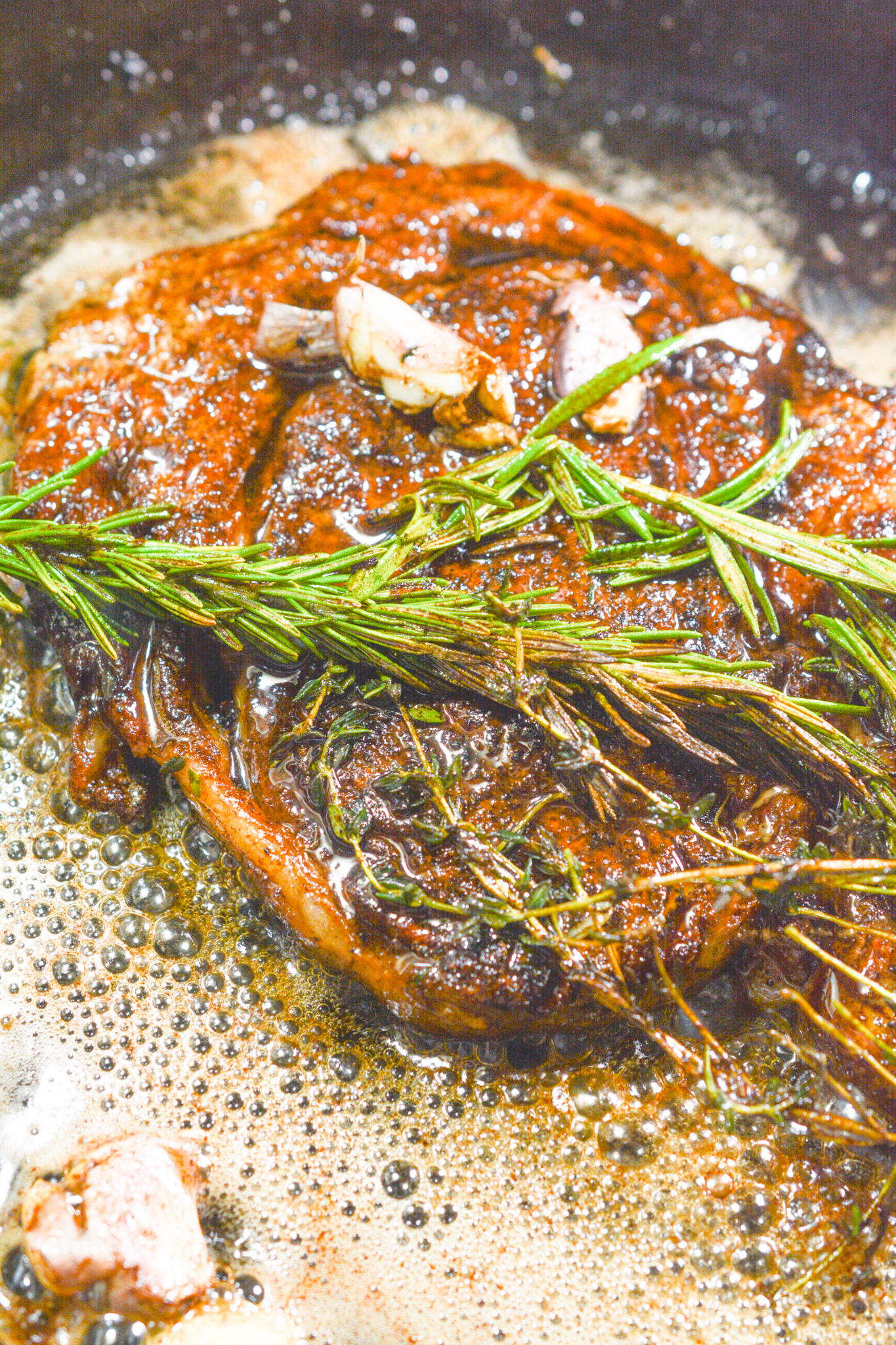
What Should You Serve With this mouthwatering ribeye steak?
Pair it with wine. Add potatoes to the dish. Salad on the side. Enjoy the ribeye steak with lobster. Or serve alone. (check out my Easy Sheet Pan Dinner)
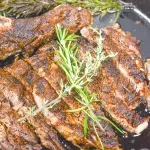
Ribeye Steak Recipe
- Total Time: 45 minutes
- Yield: 3 1x
Description
For special occasions, ribeye steaks are the best choice. This simple recipe will ensure that your steak turns out perfectly every time.
Ingredients
1 tbsp canola oil
2 sprigs of fresh rosemary
1 24-oz. bone-in ribeye steak, 2-inch-thick, at room temperature
3 tbsp unsalted butter
3 cloves garlic, smashed
3 sprigs of fresh thyme
Instructions
Pat both sides of the steak dry using paper towels, then generously season with 1 1/4 tsp salt and 1/2 tsp pepper.
Place a medium cast iron skillet on the stove and heat over medium-high. Once very hot, add the canola oil.
In the middle of the hot skillet, place the steak and sear for about 12 to 14 minutes, turning every 2 to 3 minutes until both sides formed a dark crust.
Adjust the heat to low. To one side of the skillet, push the steak. To the other side, add the butter, garlic, thyme, and rosemary. Tilt the skillet towards the butter and cook for about 30 seconds to 1 minute until the butter is foaming.
Over the steak, spoon the butter for about 1 to 2 minutes, turning over the steak once until the internal temperature of the steak reaches 120 degrees F (medium rare).
Allow the ribeye steak to rest for about 15 minutes. Then, slice.
Serve right away. Enjoy!
Notes
Allow ribeye steak rest for approximately 15 minutes before cutting into it. This will help all of the juices redists.
- Prep Time: 25 minutes
- Cook Time: 20 minutes
- Category: Main Course
- Cuisine: American
Nutrition
- Serving Size: 1 person
- Calories: 516
- Sugar: 0 g
- Sodium: 150.7 mg
- Fat: 35 g
- Carbohydrates: 1.7 g
- Protein: 49.3 g
- Cholesterol: 144.5 mg
Keywords: rib eye steak, ribeye steak, ribeye steaks

My name is Natasha and I am the owner of nodashofgluten.com, a blog dedicated to all kinds of recipes. On my website, you can find classic dishes, vegetarian delights, creative snacks, Gluten-free recipes, and desserts – all proving that cooking isn’t as hard as it seems! With easy-to-follow instructions and tips on how to make your meals even better, I strive to help everyone become master chefs in their own kitchen. Come join me at nodashofgluten.com for some delicious fun!



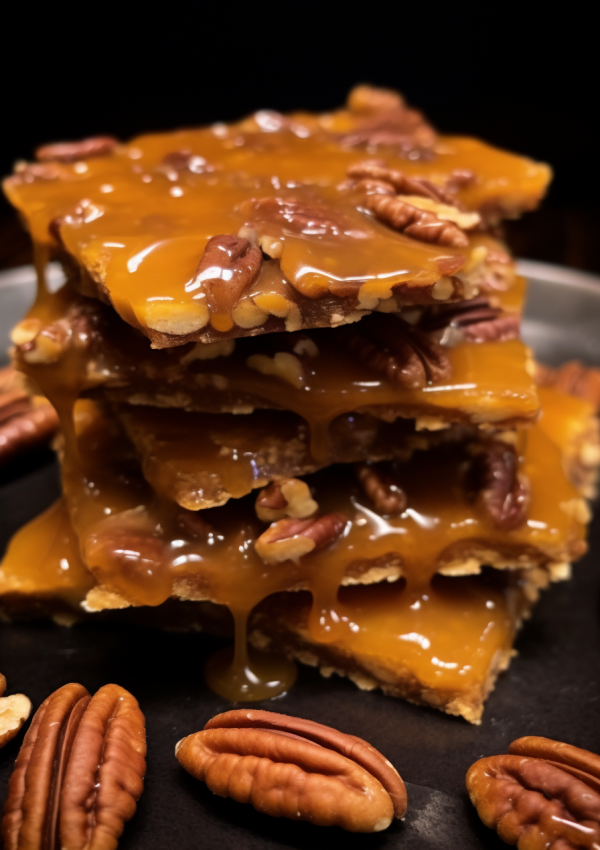
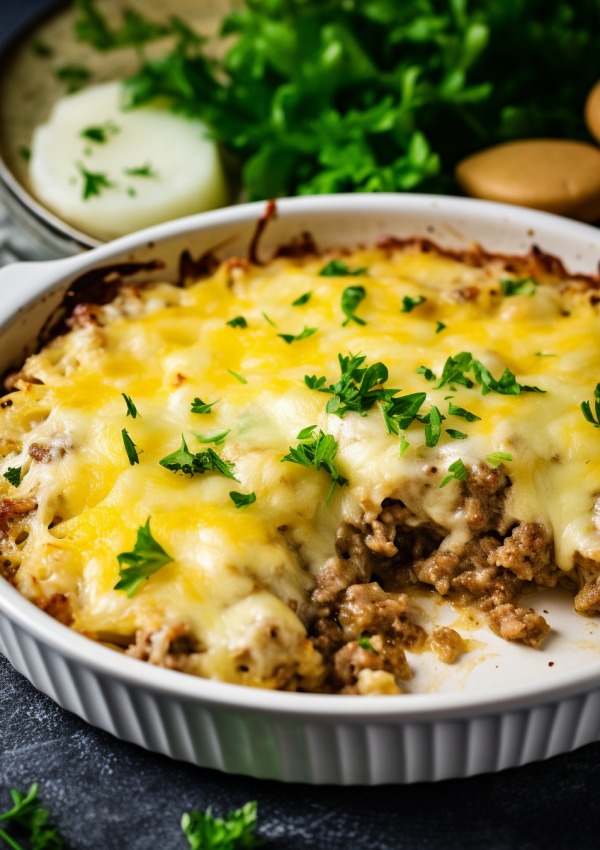



Leave a Reply